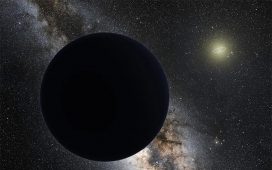- By Brandon Livesay
- BBC News
Watch BBC asks Nasa: What about reports of ‘aliens’ in Mexico?
A Nasa probe into hundreds of UFO sightings found there was no evidence aliens were behind the unexplained phenomena, but the space agency also could not rule out that possibility.
If the truth is out there, this long-awaited report offers no conclusive evidence.
But it did outline how Nasa will investigate what it calls UAPs (Unidentified Anomalous Phenomena) with improved technology and artificial intelligence.
Nasa administrator Bill Nelson said the US space agency will not only take the lead in researching possible UAP incidents, but will share data with more transparency.
The report is 36 pages of quite technical and scientific observations, so here are some of the key takeaways.
There’s no proof aliens exist, but they might
The very last page of the report said “there is no reason to conclude” that extra-terrestrial sources are behind the hundreds of UAP sightings Nasa has investigated.
“However… those objects must have travelled through our solar system to get here,” the report said.
Although the report did not conclude extra-terrestrial life exists, Nasa didn’t deny the possibility of “potential unknown alien technology operating in Earth’s atmosphere”.
Limited amount of UAP data
Nicola Fox, the associate administrator for Nasa’s Science Mission Directorate, said: “UAP are one of our planet’s greatest mysteries” and that is mainly because of the lack of high quality data.
Despite numerous reported UAP sightings, Ms Fox said there typically isn’t enough data that “can be used to make definitive scientific conclusions about the nature and origin of UAP”.
Ms Fox announced that Nasa has appointed a new director of UAP research to “establish a robust database for the evaluation of future data”.
The director will use AI and machine learning in the data gathering and analysis process.
UFO on camera
Nasa weighs in on viral ‘alien’ photos from Mexico
BBC reporter Sam Cabral asked the Nasa panel about a series of photographs of purported extra-terrestrials that were presented to Mexican authorities earlier this week.
A self-proclaimed UFO expert, Jaime Maussan, brought what he presented as two ancient “non-human” alien corpses to a congressional hearing. He claimed the bodies had been found in Cusco, Peru, in 2017 and that radiocarbon testing dated the objects to be up to 1,800 years old.
The authenticity of the specimens has been greeted by heavy scepticism in scientific circles, and Mr Maussan himself has previously made claims of extra-terrestrial life that were debunked.
Nasa scientist Dr David Spergel told the BBC: “Make samples available to the world scientific community and we’ll see what’s there.”
Image source, Getty Images
Identity of new UFO boss remains a mystery because of threats
There will be a new Nasa director of UAP research – but their identity remains a mystery.
Details of the role and how much they will be paid were left curiously vague during Thursday’s briefing, considering Nasa has pledged to be more transparent with its UAP research.
One reason for this could be to protect the new director from any potential public harassment.
Dr Daniel Evans, Nasa’s Assistant Deputy Associate Administrator for Research, said members of the UAP research panel had received “actual threats”.
He said Nasa takes the security and safety of the team “extremely seriously” and that the threats had played a role in the decision not to publish the name of the UAP research director.
Artificial intelligence and machine learning are “essential tools” for identifying UAPs, the report said.
The public is also considered a “critical aspect of understanding UAP”.
Nasa, which has said one of its biggest challenges of better understanding and identifying UAPs is a lack of data, aims to plug that gap through crowdsourcing techniques.
This includes “open-source smartphone-based apps” and other smartphone metadata from “multiple citizen observers worldwide”.
There is currently no standardised system for aggregating and organising civilian UAP reports, the report said, “resulting in sparse and incomplete data”.










